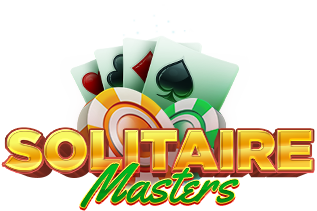Building a mobile app for free Solitaire games and launching it on platforms like the App Store and Google Play Store is an exciting venture. However, understanding the financial commitment involved is crucial for planning and success. From initial development to post-launch maintenance, let's explore the app development costs for offering free Solitaire games on these platforms.
Breaking Down Development Costs
1. Concept and Design
The journey begins with conceptualizing the game and creating its design. Solitaire is a classic game, but modern players expect more than a basic interface. Investing in intuitive design, engaging graphics, and smooth navigation is essential.
- UI/UX Design: Expect to spend $3,000 to $8,000 for high-quality user interface and user experience design tailored for Solitaire.
- Theme Customization: If you want to offer multiple themes or card designs, additional costs will apply, potentially ranging from $1,000 to $5,000.
- Prototyping: Mockups and prototypes for testing and refinement may cost another $1,000 to $3,000.
Design sets the tone for your app, so allocating resources here is a smart move.
2. Core Development
Developing the actual app is the most significant cost factor. This involves writing the code, integrating features, and ensuring smooth functionality.
- Platform-Specific Development: Developing for both iOS (App Store) and Android (Google Play Store) can cost between $15,000 and $40,000, depending on the complexity of features.
- Game Logic and Features: Adding functionalities like difficulty levels, tutorials, hints, and undo options can increase the development budget by $5,000 to $10,000.
- Back-End Infrastructure: If your Solitaire app has leaderboards, user profiles, or multiplayer modes, you'll need a robust back-end system. This adds $8,000 to $15,000.
- Cross-Platform Tools: Using tools like Flutter or React Native to develop one codebase for both platforms might reduce costs slightly, ranging from $20,000 to $35,000.
3. Testing and Quality Assurance (QA)
No one wants to play a buggy game. Allocating funds for thorough testing is non-negotiable.
- Manual Testing: Costs can range from $2,000 to $5,000, depending on the number of features and iterations.
- Automated Testing Tools: Investing in automated testing can add $1,000 to $3,000 upfront but saves time and costs in the long run.
- User Feedback Loops: Conducting beta testing with real users often requires small incentives or rewards, costing around $500 to $1,500.
Testing ensures your game provides a seamless experience, keeping players engaged and happy.
Post-Launch Expenses
1. Publishing Fees and Marketing
Getting your app on the App Store and Google Play Store involves specific costs.
- App Store Fees: Apple charges $99 per year for its developer program.
- Google Play Store Fees: A one-time fee of $25 is required for publishing on Google Play.
- Marketing Campaigns: Promoting your Solitaire app through ads, influencers, and social media can cost $3,000 to $10,000 initially.
2. Maintenance and Updates
Releasing your app is just the beginning. Regular updates and maintenance are essential to keep it relevant and competitive.
- Bug Fixes and Performance Updates: Allocating $2,000 to $5,000 annually for bug fixes and performance improvements is standard.
- Feature Enhancements: Adding new features like seasonal themes or multiplayer modes can range from $3,000 to $8,000 per update.
- Customer Support: Offering responsive support may require an annual budget of $1,000 to $3,000, depending on the size of your user base.
Revenue Considerations for Free Apps
While your Solitaire app is free to download, generating revenue is possible through several monetization strategies:
- In-App Purchases: Offer custom card decks, hints, or premium themes for a small fee.
- Ads: Integrating banner or video ads can generate consistent income, but ensure they don't disrupt gameplay.
- Subscriptions: A subscription model for an ad-free experience or exclusive content is another option.
Monetization strategies may involve additional development costs, such as integrating payment gateways or ad SDKs, which can add $1,000 to $3,000.
Budgeting Tips for Solitaire Game Development
Planning and allocating your budget effectively can save time and prevent overspending.
- Prioritize Features: Focus on essential features first and expand later. For example, launch with a single-player mode and add multiplayer later.
- Use Templates and Open-Source Tools: Leveraging existing game templates can reduce costs.
- Hire Freelancers or Small Teams: Instead of large development agencies, consider hiring experienced freelancers or smaller teams for a more affordable yet high-quality output.
Where to Invest and Save
Invest in aspects that directly impact user experience, such as intuitive design, smooth gameplay, and engaging features. These elements will keep players engaged and ensure positive reviews, which are crucial for attracting new users. Save by using scalable infrastructure or launching with a minimal viable product (MVP) before investing in advanced features. Starting with an MVP allows you to gather user feedback early, helping you prioritize future updates and avoid unnecessary development costs.
Crafting a Solid Solitaire App Development Plan
Building a free Solitaire game app for the App Store and Google Play Store requires a clear understanding of costs and priorities. By planning your budget carefully and focusing on essential features, you can create a competitive game that resonates with players. The journey may involve various expenses, but the potential rewards - both in terms of user engagement and revenue - make it a worthy investment.
